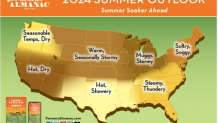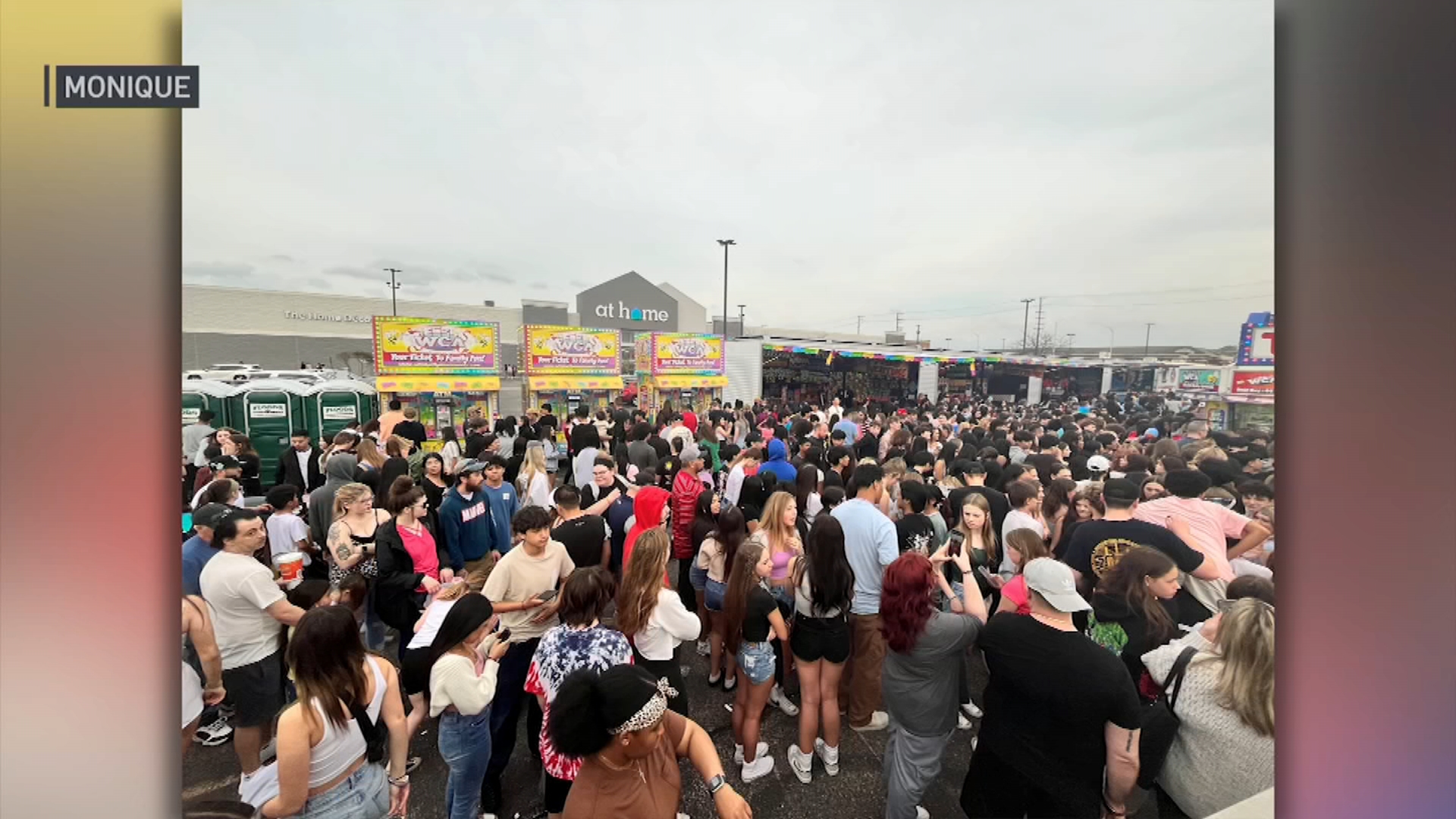It's only a matter of time before summer hits the Chicago area. But just how hot is the season expected to be this year?
According to the latest prediction from the Farmer's Almanac -- very.
As part of its recently released "Summer 2024 Weather Forecast," the publication claims that this summer "may bring the hottest temperatures in recorded history."
It's also set to arrive early, with the summer solstice occurring Thursday, June 20 at 4:51 p.m. According to the publication, that's the earliest start to summer in 128 years.
Feeling out of the loop? We'll catch you up on the Chicago news you need to know. Sign up for the weekly Chicago Catch-Up newsletter here.
The report predicts a hot summer for nearly nearly all of the contiguous U.S., with most areas east of the Mississippi River expected to see a wetter-than-normal season.
The Great Lakes region in particular is predicted to see "muggy and stormy" conditions this summer, while much of the Southeast is described as "steamy and thundery."
The Great Plains are looking ahead to a "warm, seasonally stormy" summer, while hot and dry conditions are predicted for much of the American West.
As for the one region seeming to avoid the heat this summer when it comes to the Farmers' Almanac predictions, the Pacific Northwest is poised for dry conditions and seasonable temperatures.

The almanac also predicts an especially soggy August and September across the eastern two-thirds of the U.S., while reminding gardeners that more moisture will likely mean more bugs around this summer.
Local
The Farmer’s Almanac cites a variety of factors they use in formulas to determine their weather projections, including sunspot activity, tidal action of the moon and a variety of other factors.
How accurate is the weather prediction?
The publication claims a success rate of 80-to-85% with their predictions, though many media studies have contested that figure.
Many meteorologists dispute the accuracy and the methodology employed by the publication. One such study, conducted by the University of Illinois and cited by Popular Mechanics, holds that the Old Farmer’s Almanac is only correct 52% of the time, which essentially represents the odds of a coin flip landing on either heads or tails.
According to the National Oceanic and Atmospheric Administration, there's a one-in-three chance that 2024 will be warmer than the record-hot 2023, with a 99% chance that 2024 will rank among the top five warmest years in recorded history.
The predictions come on the heels of an El Niño winter that brought some big shifts when it came to the area's typically cold and snowy conditions this year.
Chicago's summer conditions could be seeing a switch if a La Niña were to occur, a change that may already be taking place as the National Weather Service center issued a La Niña watch for later this year.
According to recent projections from the National Weather Service's Climate Prediction Center, there is an 83% chance El Niño conditions weaken, becoming neutral between April and June.
But from June to August, the odds of a La Niña event developing climbed to 62%, up from 55% in February.
Here's more on what a La Niña is, how it compares to the Farmers' Almanac predictions and what it could mean for the Chicago area:
What is a La Niña event?
According to the NWS, La Niña marks a time where trade winds are stronger than usual and push warm water toward Asia, and bring cold, nutrient water to the surface off the West Coast in the U.S.
"These cold waters in the Pacific push the jet stream northward," the NWS reported.
It is the opposite effect of El Niño.
What does it mean for weather?
La Niñas typically lead to droughts in the southern U.S., but bring heavy rain and flooding to the Pacific Northwest and Canada, according to NWS.
"During a La Niña year, winter temperatures are warmer than normal in the South and cooler than normal in the North. La Niña can also lead to a more severe hurricane season," the NWS reported.
What about in Illinois?
In terms of impacts on Illinois, researchers say that summers tend to be warmer and drier than normal during a La Niña pattern, while fall tends to see cooler and wetter conditions.
This differs from the 2024 prediction from the Farmers' Almanac for the region, which predicts "muggy and stormy" conditions for the summer.
This also contrasts to the climate during an El Niño pattern, which lead to slightly milder summers in the Chicago area while temperatures in much of the United States were above average for summers.
"Generally, La Niña impacts are not as clear-cut because there are fewer strong ones in recent years," the University of Illinois reported.
According to the U of I, La Niña impacts in Illinois can include:
- Summers have a tendency to be warmer and drier in Illinois
- Falls have a tendency to be cooler in the north and wetter in the southeast
- Winters are typically warmer and wetter than average with more snow and winter storms
- Springs tend to be cooler across most of the state and drier in the west
Winters tend to be warmer during La Niña events, but Illinois is more prone to cold snaps and heavy snow events, according to researchers.
A La Niña could help subside much of the rapid warming seen in the past year that is partly attributed to the El Niño pattern.
But the NWS stressed that "La Niña impacts are not as clear-cut because there are fewer strong ones in recent years."
More information on the summer predictions from the Farmers' Almanac can be found here.



